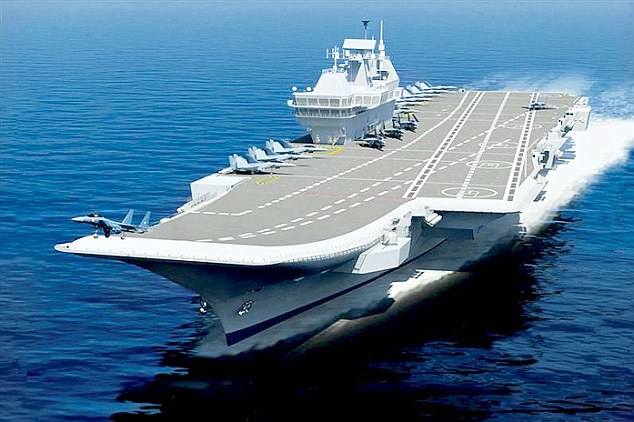In the modernization drive of the Indian Army, the Modi government has given its approval for the induction of 56 ships and submarines besides the construction of 32 warships.
While addressing a press conference in New Delhi, the chief of the Indian Navy, Admiral Sunil Lanba said that due to the growing presence of Chinese warships in the Indian Ocean, the government of India has approved this purchase.
In a statement, he said, “The government has given approval to having 56 ships and submarines. Some of these will replace the existing fleet and include new ships like fleet ships, submarines and minesweepers.”
According to Admiral Lanba, “The 32 ships and submarines are presently under construction in Indian shipyards include the Aircraft Carrier, Vikrant, P-15B Class Destroyers, P17A class stealth Frigates, P28 ASW Corvettes, Offshore Patrol Vessels and `Scorpene’ class submarines.”
On being asked about the present condition of Indian naval forces and its ability as compared to the strength of the Chinese Navy, the Navy chief said that the Indian Navy with 200 ships and 500 aircraft will become a powerful Navy by the year 2050.
The Navy is also developing its first indigenous aircraft carrier, INS Vikrant. It is in its final and third phase of construction at Kochi and the sea trials for it is expected to start somewhere in mid-2020.
Admiral Lanba further said, “The third aircraft carrier (AC) is important because if we have three aircraft carriers, it will give us the capability to fight in the war at least with two at any given time. We are in discussion (with the government) and we have worked out the details. We will see a start in three years.”
With the induction of INS Vikrant, it will not only boost the might of the Indian Navy and but also help in increasing the reach and impact capabilities of carrier-borne strike forces, both as a means of deterrence as well as during combat operations.
Regarding further acquisition of aircraft carriers, Admiral Lanba said that though the Indian Navy lacks and is at least a decade away it will accrue significant gains by promoting indigenization. This will also boost the economy through the different cycle of manufacturing which includes construction, maintenance, and up-gradation.
On the other hand, China’s recent deal with Malaysia to develop the port of Malacca will strengthen Chinese Navy, providing it with operational presence in all the three critical points in the Indian Ocean Rim (IOR), i.e., Gulf of Oman (mouth of the Strait of Hormuz), Gulf of Aden (Exit from Red Sea) and Malacca Straits. China is also is constructing two naval bases, Djibouti and Gwadar which will facilitate carrier and submarine operations. For the Indian Navy to counter the expanding Chinese Navy, modernization becomes a must.
Recently, the Modi government has also given green signals for the purchase of MH-60 helicopters from the United States. These purchases seek to strengthen the Indian Navy and pitch India as an emerging power in the Indian Ocean Region. The current purchase of 24 helicopters will enhance the preparedness of the country for a two-front war and strengthen the position of Indian Navy in the Indian Ocean.
On Navy Day, PM Modi greeted “the guardians of the sea” as he wrote, “Navy Day greetings to all valorous personnel of the Indian Navy and their families. India is grateful to our Navy for protecting the nation and the commendable role the Navy plays during disaster relief.”
Navy Day greetings to all valorous personnel of the Indian Navy and their families. India is grateful to our Navy for protecting the nation and the commendable role the Navy plays during disaster relief.
— Narendra Modi (@narendramodi) December 4, 2018
The acquisition and modernization drive has been undertaken in order to strengthen the naval forces and to ensure stability in the Indian Ocean. The Modi government has focussed on manufacturing defense equipment in the nation itself with schemes like ‘Make in India‘.
